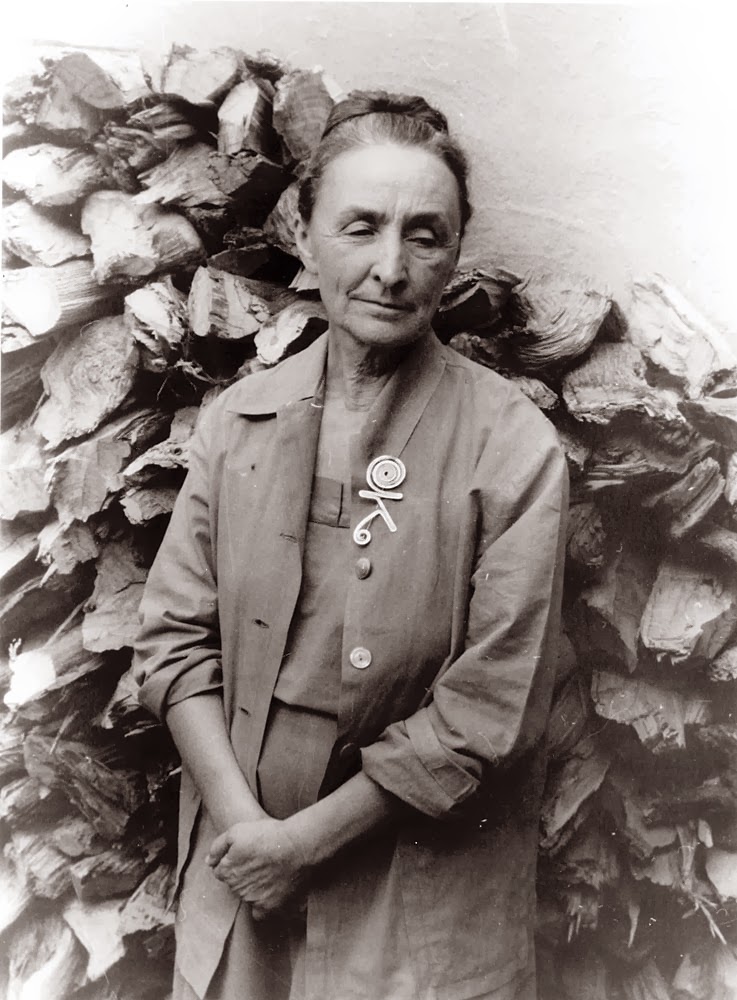 |
| My favourite catalogue of all time is Calder Jewelry, which was published in three formats and editions. They ranged in price from $189 to over $700! |
Exhibition catalogues have been on my mind lately. In the past few years, I have purchased
or received press copies of some weighty tomes. Eye candy.
Others are slender affairs with more modest budgets. But all are documents of
exhibitions. They outlive
exhibitions or extend their lives, circulating long after the shows have come
down.
An exhibition catalogue is often a better gauge of how the
artist and curator want you to see the exhibition than the exhibition
itself. Close up shots and details
present the viewer with unavoidable ways of regarding the art. The text furnishes more information to
the image. Ideally, you will look
at the photos first, read the text and then go back for a second look and see
things you might have missed.
 |
| This is Anjelica Houston wearing a Calder necklace called the Jealous Husband. Photos like these add so much to an exhibition. |
But a catalogue is only as good as its distribution. They do no one good sitting on a shelf
in a gallery's back room or under the artist's bed. Being cat furniture does not count as a good use. Start keeping a list of people who
would benefit from receiving your catalogue. I was proud beyond measure when my Michael Massie catalogue
for the exhibition Silver and Stone put together for The Rooms Provincial Art
Gallery went into a second printing and was distributed to school libraries in
the province because of what it contributed to contemporary Inuit content.
Use your catalogues!
Give them away if you have to.
If you are either the artist in question or you worked on the show as a
writer, curator, or gallery staff in some other capacity, the catalogue is
better than a business card. Bring
them to conferences. Trade them
with fellow artists and other art professionals in person or in the mail. This
is a good way to build your own personal library. And don't forget collectors.
 |
| Georgia O'Keefe wearing Calder brooch in 1950 (© Carl van Vechten, courtesy Norton Museum of Art) |
Sign them! The
most common complaint I receive from collectors is that artist x has not signed
his or her catalogue. A collector
is collecting you as much as the work, your signature makes the publication
personal and a few extra words giving it more specific content is good
too. You are building a
relationship that you want to last.
In this day and age of the digital and virtual the need to
rationalize the publication and budget of catalogue has grown. Why spend money on printing? You can go either way. There are print-on-demand only books
with extremely limited runs. Or
bump up your publication to something extra special like an art book, or
include a sample of the artist's work be it a mini weaving, piece of jewelry or
a print. Or how about a CD? The trick is finding the proper venue
to sell them. If your public
gallery does not usually sell books you may run into problems. On the other hand, if your public
gallery has a gift store that's a different story. It is a case of match-making.
Digital versions of catalogues are cheaper to distribute and
share with colleagues. You can
also send these around to publications in the hope that they might excerpt your
essay and photographs. A good catalogue
requires serious work to produce so why not get the maximum return on your
investment?
Right now I am looking forward to reading the catalogue from
the Winnipeg Art Gallery of Robert Archambeau's pots and drawings. I consider Archambeau to be one of the
five best potters in Canada and so I am hoping for that quality to be reflected
in the publication. I am reviewing
it for an upcoming issue of FUSION magazine.
No comments:
Post a Comment